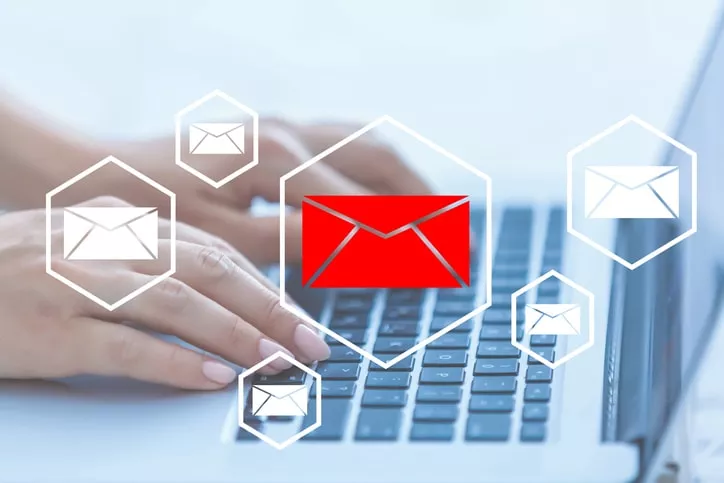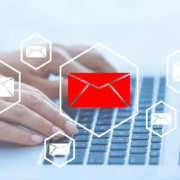Five Email Security Tips Every Business Needs in 2020
More than 125 billion business emails are sent and received every day. That’s more than 17 emails per day for every man, woman, and child on the planet.
And this number is only growing.
With email the primary form of business communication for most industries, analysts expect that more than 300 billion emails will be sent every day by the end of 2021.
But for all of its undeniable utility and efficiency, email also represents a potential point of intrusion for hackers and nefarious parties looking to do your business harm. From rogue employees sharing privileged information to SPAM messages that distract employees from work, there are a myriad of ways that your primary business communication platform can wind up causing plenty of harm to go along with the good.
Ensure you are protected by knowing more about the most common threats your business faces.
![]()
The Most Common Threats to Business Email
To protect your company from email issues and intrusions, it’s important to first understand what those issues might actually be. While the dangers associated with email might seem fairly straightforward, with enough messages being sent to enough mailboxes on a long enough timeline, even the smallest and most technically sound organization can easily come under attack.
Some of the more common threats to email infrastructure include phishing, spoofing, SPAM, and insider threats.
Phishing Attacks
In phishing, the sender uses deception in an effort to gain private information such as a system password or financial information. In fact, phishing accounts for 90% of all data breaches and more than three-quarters of all businesses report being the victim of phishing attacks in the last calendar year.
Spoofing Attacks
Spoofing attacks are similarly deceptive. In a spoofing attack the sender acts like someone who is a trusted contact and asks for information to which they should not have access.
SPAM
SPAM is one everyone is familiar with: a message that is unwanted and frivolous, often selling a product or service that is of no interest at all.
Insider Threats
Not all email threats originate outside of the office. Email is also abused by company employees who may share company information with unauthorized parties or accidentally send a message to an unintended recipient.
And while it would be easy to think that these mistakes are born of carelessness instead of malice, nothing could be further from the truth. Entire company roadmaps are leaked and trade secrets disclosed using company email addresses.

Five Email Security Tips for Businesses of All Sizes
The good news is that many of the most common threats to email can be mitigated or even eliminated across your entire organization.
Here are 5 email security best practices that every organization should consider implementing:
1. Train Your Users
The first step to greater email security is making sure users know how to properly use your email system in the first place. From proper instruction on how to use the “Copy” and “BCC” functions to best practices about what content is allowed to be sent via email, giving users the tools and knowledge they need to use email responsibly goes a long way in stopping email harm.
Assuming that your users know how to use email properly is a mistake; phishing, spoofing, and SPAM all exist because they work! Training your team on how to avoid falling into an email trap is critical.
2. Add a Notification Tool
There are a variety of tools that can notify users when an email has originated from an external or unfamiliar address. Similarly, most email systems also have some level of SPAM filtering built in with thresholds that can be set by your IT administrator.
These tools rarely interrupt or distract users, but rather provide useful information during the course of using email that can help your team make good decisions about what emails deserve a reply… and what emails should be treated with caution.
3. Implement an Attachment Size Limit
Your email systems likely also includes a setting for how large the maximum attachment can be for sending an email. One way to prevent private company data from falling into the wrong hands is to prevent how much data can be sent via email at any given time. This simple setting can keep company secrets safe by default, shoring up one area of vulnerability with just a few mouse clicks.
4. Backup Everything
Email security isn’t just about phishing and SPAM, it’s also about user behavior. Believe it or not, disgruntled employees have a way of deleting important emails on their way out the door. Having a permanent record of every email sent and received goes a long way to tracing a problem if one actually does occur. Offsite, permanent backups that cannot be modified, deleted, or repurposed can protect your organization in the event of data loss or intrusion through the production email environment.
5. Use a Reliable Email System
Google has G Suite for Business. Microsoft offers Office365. AlpineWeb even offers business email built with many of the same principles and failsafes in mind: included security and SPAM filtering, enhanced administrative controls, and simple integration with other tools and systems.
Smart CTOs know that protecting their organizations from these ill effects comes from a combination of best practices and cutting-edge tools.
By balancing the role of the user with the feature-set of email itself, security and compliance can be adhered to in ways that don’t limit functionality but do limit potential problems.
Premium Business Email from AlpineWeb
We provide robust, powerful, and secure email environments to thousands of companies the world over. As with our other infrastructure solutions, Business email users count on AlpineWeb to secure and maintain their email environment without compromising on performance and flexibility. Find out how AlpineWeb’s Premium Business Email can protect your company from a wide range of threats.



